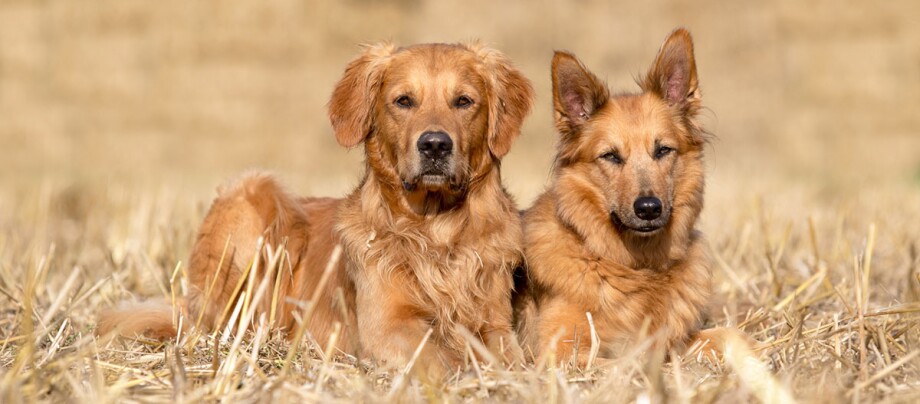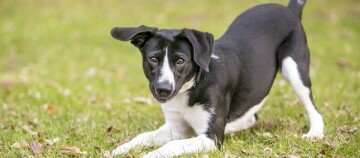Pros and Cons of a Male or Female Dog and How You Can Decide!
20.03.2025 - Reading time: 6 minutes

For a real dog lover, it’s not always easy to choose between the sexes: is a male or female dog better? Owners of multiple dogs might also ask themselves: male or female? Find helpful information here that can make the decision easier for your, and find out about the pros and cons of a male or female dog.
Gender-specific differences between male and female dogs
A deep-seated prejudice leads many people to believe that male dogs are rowdier, easily excitable and more problematic to train than females. Female dogs are considered to be cuddlier, more docile and more obedient to lead. But is this really true?
The fact is that above all, dogs are individualists and show different character traits depending on the breed. For example, a Doberman female will most likely be much more dominant and more territorial than a greyhound male. So whether a female dog is easy to train and a male dog is boisterous is completely independent of gender – just as it is with us humans. Nevertheless, there are a few gender-specific characteristics that you should be aware of.
Male and female dogs - Gender-specific tasks of their ancestors
Although our “lap dogs” have long since evolved from their ancestors, the wolves, it is still helpful to keep in mind what originally motivated the gender differences between male and female dogs.
Stressful tasks for a male dog
Males in a wild wolf pack are responsible for marking the boundaries of the territory and defending it from enemies, keeping the pack together, providing food and reproducing and helping to raise the pups. They have to stand their ground in the pack against other males and, in the best case, know how to assert themselves.
Some of these behaviour traits have been passed on to our domestic dogs and are part of their genetically determined behaviour pattern. This is why male dogs mark “their” territory over and over again, and in most cases it is not their territory, it is a street or a park.
Male dogs, especially when young, also need to test their strength against others to explore the potential of their dominance skills and to mark their claim on females. However, this genetic predisposition tells us nothing about whether they are fundamentally stubborn, unteachable or aggressive.
If the female dog only follows the male…
The role of the female in a wild dog pack is to help provide food, give birth to puppies and care for them. As a rule, the female leader mates with the male leader, and all the females in the pack and the father of the puppies take care of rearing their offspring.
The female dog reaches sexual maturity between the sixth and tenth month and therefore has her first heat, which lasts about three to four weeks, depending on the size and breed. In the first seven to ten days the ovaries mature, the female marks and thus signals her condition. During this time, bitches are often less concentrated, more nervous and more irritable than usual. After this, ovulation marks the beginning of readiness to mate, the actual heat in which the female can become pregnant. For about six to ten days, the female dog’s sole interest is in the male of the species.
During this time, even the most obedient female can forget the rules of behaviour she has been taught and go off “wandering”. At the same time, she can be particularly abrupt and snappy towards her mates. Some dominant females also raise a leg during this time as a marker to demonstrate their strength and attractiveness to males who are willing to mate.
A few weeks after the heat, the female will become pseudopregnant – provided she is not pregnant. She has inherited this from her ancestor, the she-wolf. Because in a pack, all female wolves deal with the offspring of the lead she-wolf and can suckle the pups. This false pregnancy is not always so distinctive that the dog owner will notice it. But in some females, false pregnancy can become a problem for the animal because she cannot get meaningful fulfilment. She can then become restless, irritable, snappy and lack appetite. Physically, she may also show symptoms such as milk production, contractions and even a false birth. She may become protective of her toys as a puppy surrogate.
Depending on the breed and predisposition, a female dog generally comes into heat once or twice a year. During this time, the female dog bleeds to varying degrees, and depending on her individual cleanliness, she leaves droplets of blood in the home. In some special cases, a pair of pants can be helpful, but then that prevents females from ever learning how to maintain their natural cleanliness.
Neutering as a way to have an obedient male dog or a faithful female dog?
If you are deciding on a male or a female dog, you should not do it with the ulterior motive of “correcting” her or his genetic predisposition by neutering as you wish. For the female dog it means a major operation under a general anaesthetic and for the male it can lead to hormonal changes (in its character and weight).
Dog psychologists and veterinarians agree on one thing: neutering never necessarily leads to an obedient or submissive dog. Please discuss with your vet whether it makes sense to neuter the male or female dog.
So which gender suits me best?
You should really make a decision as to whether a male or a female dog is suitable for you, regardless of the common prejudices. Of course, there are small but subtle differences that are biologically and genetically determined. Female dogs are usually smaller than their male counterparts and often have less or shorter fur. As a result, they are also lighter. Behavioural patterns are also breed-specific: you can expect dominant breeds, such as Dobermans or Huskies, to produce dominant females. However, the majority of animal behaviour patterns result from the bond between dog and owner as well as from the dogs’ upbringing.


